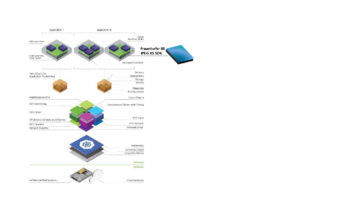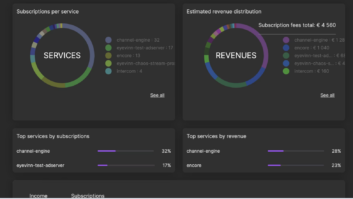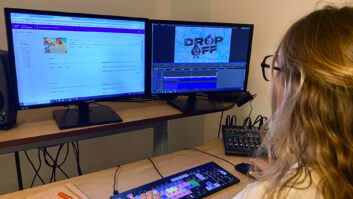The global media landscape is becoming ever more fragmented. Instead of delivering content to one big audience all watching the same programme at the same time via the same technology, broadcasters now have to cater for lots of smaller audiences watching at different times and on different devices.
We’ve moved from delivering content in the form of a linear channel to a handful of handover points for onwards distribution to consumers, to a model that involves hundreds of handover points and a mixture of linear feeds and non-linear packages for catch-up and on demand services.
While viewing audiences are now more fragmented, the actual overall numbers have stayed more or less the same. However to reach them, the process of delivering content has become hugely complex. Offering content via new platforms and devices is necessary just to retain existing audiences. This content also has to be localised to meet the needs of audiences in different territories; it’s all about ensuring content is relevant to viewers which, in turn, makes monetisation far more achievable This is, of course, the ultimate business aim.
Controlling the cost of delivery has now become increasingly important. As each audience fragment may be small it can be the case that even very large broadcasters don’t have the critical mass for each delivery type in order to commission, build and support their own infrastructure. Economies and flexibility of managed services are critical.
The broadcast services business is no longer just about supporting linear channels with playout and delivery services; it’s about the logistics involved in getting content from wherever it’s coming from to wherever it’s going to. That involves all the preparatory steps before it can be broadcast or streamed in some way.
It’s a case of managing that media through often complex, multi-party workflows and enabling internal and external specialists, wherever they may be geographically, to collaborate in preparing the content for broadcast and ultimately packaging the content and deliver it to consumer platforms.
When broadcasters have multiple channels in multiple territories, delivered both as a linear and on-demand service, this can be a very complex process, involving multiple providers, multiple compliance requirements and handover to local affiliates. Delivering the content to multiple VoD platforms means that for each of these outlets a specific package needs to be prepared and delivered.
Broadcast service providers like ourselves now need to offer clients expertise in handling both linear broadcast and on-demand services and the ability to manage and localise content for individual territories. It’s also essential to provide broadcasters with the right mix of technical expertise, highly experienced staff and in-depth knowledge of complex content workflows, enabling them to handle the legal and technical complexities associated with delivering localised content across multiple regions and platforms.
It’s important to recognise that there’s been a shift in the balance of power to the viewer. As an industry as a whole we all need to work together to provide the best possible viewer experience from content discovery through to quality of delivery, manage technical complexity to remain competitive and above all fight for the time and attention of our audience. As content consumption becomes less linear, the competition for audience eyeballs is something we all need to address.







